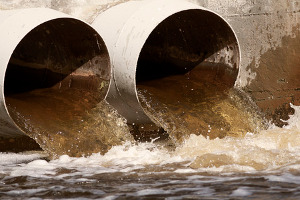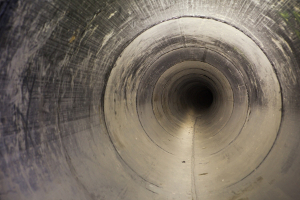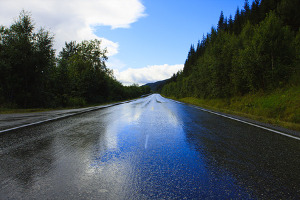
Stormwater management is a critical aspect of urban planning and environmental protection that often goes unnoticed by the general public. To truly appreciate its importance, we must first understand what stormwater is and why it needs to be managed.
This comprehensive guide will delve into the intricacies of stormwater, its impact on our environment and infrastructure, and the various techniques used to manage it effectively.
Understanding Stormwater
Stormwater is the excess water that accumulates after precipitation events such as heavy rainfall or snowmelt. In natural environments, this water would typically be absorbed into the ground, filtered by soil and vegetation, and slowly make its way into streams and rivers. However, in urban and developed areas, where impervious surfaces like roads, parking lots, and buildings dominate the landscape, this natural process is disrupted.
When rain falls on these impervious surfaces, it cannot penetrate the ground and instead flows over the surface, picking up pollutants along the way. This runoff water, now contaminated with various substances, is what we refer to as stormwater.
The Importance of Stormwater Management
Effective stormwater management is crucial for several reasons:
- Flood Prevention: Unmanaged stormwater can lead to flooding in urban areas, causing property damage and posing risks to public safety.
- Water Quality Protection: As stormwater flows over surfaces, it picks up pollutants such as oil, pesticides, and litter. Without proper management, these contaminants end up in our water bodies.
- Erosion Control: Excessive runoff can cause soil erosion, damaging landscapes and potentially undermining building foundations.
- Habitat Preservation: Uncontrolled stormwater can harm aquatic ecosystems by altering water temperatures and introducing pollutants.
- Infrastructure Protection: Proper management helps prevent damage to roads, bridges, and other infrastructure caused by water accumulation and erosion.
- Groundwater Recharge: Effective management techniques can help replenish groundwater supplies, which is especially important in water-scarce regions.
Environmental Impact of Unmanaged Stormwater
The environmental consequences of poorly managed stormwater are far-reaching:
 Water Pollution: Stormwater runoff is a leading cause of water pollution. It carries a cocktail of contaminants including:
Water Pollution: Stormwater runoff is a leading cause of water pollution. It carries a cocktail of contaminants including:
- Oil and grease from vehicles
- Pesticides and fertilizers from lawns and gardens
- Bacteria from pet waste
- Heavy metals from roof runoff
- Thermal pollution from heated surfaces
- Ecosystem Disruption: Sudden influxes of stormwater can alter stream flows, damaging aquatic habitats and disrupting breeding cycles of fish and other aquatic life.
- Erosion and Sedimentation: Increased water flow can erode stream banks and carry sediment into water bodies, affecting water quality and aquatic habitats.
- Urban Heat Island Effect: By reducing natural vegetation and increasing impervious surfaces, poor stormwater management contributes to higher urban temperatures.
Stormwater Management Techniques
To address these challenges, various stormwater management techniques have been developed:
Green Roofs
To address the challenges posed by stormwater, various management techniques have been developed. Green roofs, which involve installing vegetation on rooftops, absorb rainwater and reduce runoff while providing benefits such as improved building insulation, reduced urban heat island effect, enhanced biodiversity, and aesthetic improvements to cityscapes.
Permeable Pavements
Permeable pavements allow water to percolate through the surface and into the ground, reducing runoff in areas like parking lots, low-traffic roads, and sidewalks.
Bioretention Systems
Bioretention systems, also known as rain gardens, are landscaped depressions that collect and filter stormwater, removing pollutants through natural processes and enhancing local biodiversity.
Stormwater Detention Ponds
Stormwater detention ponds are artificial ponds designed to temporarily hold large volumes of stormwater, reducing peak flow rates during storms and allowing sediment to settle, which improves water quality. These ponds can also serve as recreational areas when dry.
Infiltration Planters
Infiltration planters are urban landscaping features that collect runoff from nearby impervious surfaces, filtering water through layers of vegetation, soil, and gravel. They can be integrated into sidewalks and parking lots, enhancing the aesthetic appeal of urban areas.
Stormwater Art
Stormwater art is an innovative approach that combines functionality with aesthetics, including sculptural rain gardens, artistic downspout extensions, and decorative permeable paving patterns
Rain Barrels and Cisterns
Rain barrels and cisterns collect and store rainwater for later use, reducing demand on municipal water supplies and helping to mitigate the effects of drought.
Constructed Wetlands
Constructed wetlands are engineered systems that mimic natural wetlands to manage stormwater, providing habitat for wildlife, offering recreational and educational opportunities, and effectively removing
Implementing Effective Stormwater Management
To implement effective stormwater management, a multi-faceted approach is necessary:
 Urban Planning: Incorporating stormwater management into city planning and zoning regulations.
Urban Planning: Incorporating stormwater management into city planning and zoning regulations.- Public Education: Raising awareness about the importance of stormwater management and individual actions that can help.
- Green Infrastructure: Prioritizing nature-based solutions that mimic natural water cycles.
- Maintenance: Regular upkeep of stormwater management systems to ensure their continued effectiveness.
- Monitoring and Adaptation: Continuously assessing the performance of management techniques and adapting strategies as needed.
Get in Touch with Our Stormwater Management Experts
Effective stormwater management safeguards your property and enhances urban livability for future generations. Don’t leave it to chance—consult with the experts who understand the science and strategy behind it.
Contact Dirt Connections today to learn more about our stormwater management services and find out how we can help your property become a model of sustainability and resilience. Together, we can protect your water resources, improve your outdoor environment, and create a smarter, greener future.


